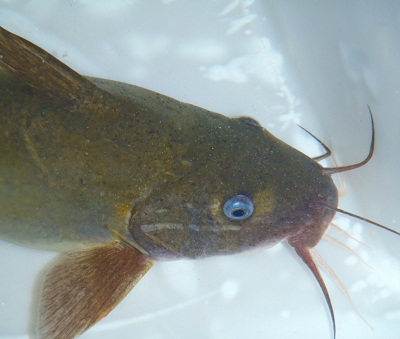Managing genetic viability of freshwater catfish in Victoria

November 2014
Recreational Fishing Grants Program Research Report
Executive Summary
The freshwater catfish (Tandanus
tandanus) is endemic to Australia, and can be found in slow moving or still waters throughout Victoria, New South Wales, South Australia and Queensland. The species was once widespread throughout the Murray-Darling River system, but their range has been altered dramatically since European settlement.
Native Fish Australia, (Wimmera) Inc received funds from the Recreational Fishing Grants Program to restore Victoria's recreational fishery by captive breeding and re-stocking freshwater catfish. To support of this project, this study was undertaken to:
- Describe the genetic structure of the freshwater catfish populations in Victoria
- Provide guidelines for genetic management of a freshwater catfish captive breeding program.
Using DNA from 218 individuals, this study examined levels of genetic diversity, expected heterozygosity, effective population size and genetic structuring of the populations, using both mitochondrial and microsatellite data.
Both mitochondrial and microsatellite data suggest that the Mallee, a naturally occurring population, is the most diverse population in Victoria. In contrast, the Avoca and Goulburn populations contained the least amount of diversity. The Loddon and Avoca sites were the only populations to contain no unique alleles. The Wimmera contained the highest effective population size (Ne) and the Loddon the lowest.
Four genetic clusters were identified in the Victorian populations, which were
Zone 1. Mallee, Wimmera, Little Murray, Gum Lagoon, Safe Lagoon
Zone 2. Loddon and Avoca (Amphitheatre Res. and Centenary Res.)
Zone 3. Phyland Lagoon and Turners Lagoon
Zone 4. Goulburn(Lake Nagambie, Majors Creek and Tahbilk Lagoon).
The genetic structuring observed in Victoria may be due to limited gene flow between populations along with influences of translocations.
Results from the genetic analyses were used to develop guidelines for the genetic management of freshwater catfish broodstock used for stock-enhancement. The following points were recommended:
- Avoid mixing fish between the four genetic zones identified in Victoria.
- Use wild-born fish from Zone 1 and Zone 3 populations as broodstock.
- Tag all broodstock for identification purposes.
- Develop artificial spawning methods to improve genetic management of stock.
- Spawn as many broodstock as possible each year. As a minimum spawn at least 10 fish (5 females and 5 males) each year.
- Maintain as many broodstock as possible.
- Spawn an equal number of female and male fish each year.
- Undertake single-pair (one female and one male) matings only.
- Mate different individuals each year (do repeat mating crosses that were undertaken in previous years).
- Replace 10% of broodstock each year with new stock.
- Maintain detailed and accurate breeding records.
- Undertake stockings in accordance with the policies and protocols of The Victorian Fisheries Authority.
- Spread the target number of fish to be stocked into each site over 4-5 consecutive years.
- Mark (tag) all fingerlings before release.
Following these recommendations will increase genetic diversity of the stocked fish while minimising loss in genetic diversity or changes in genetic structure of existing wild populations.
Further Information
For a copy of the Full Report please email: richard.rogala@vfa.vic.gov.au
